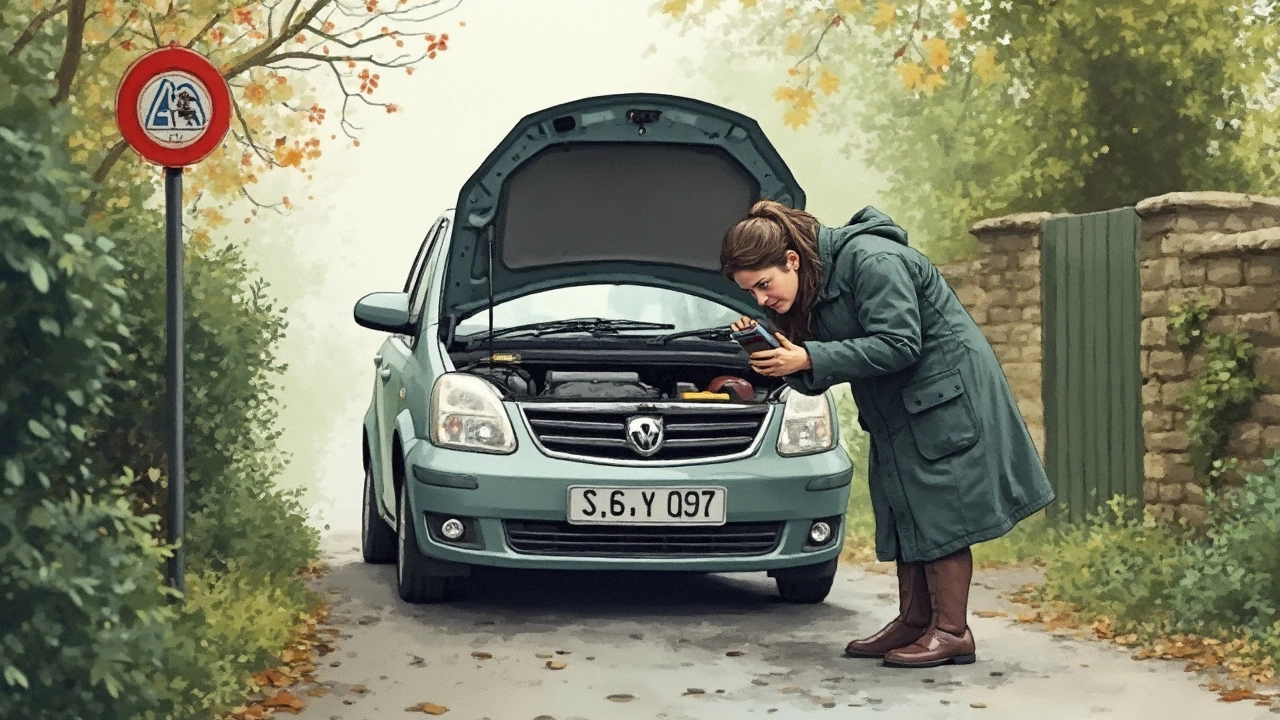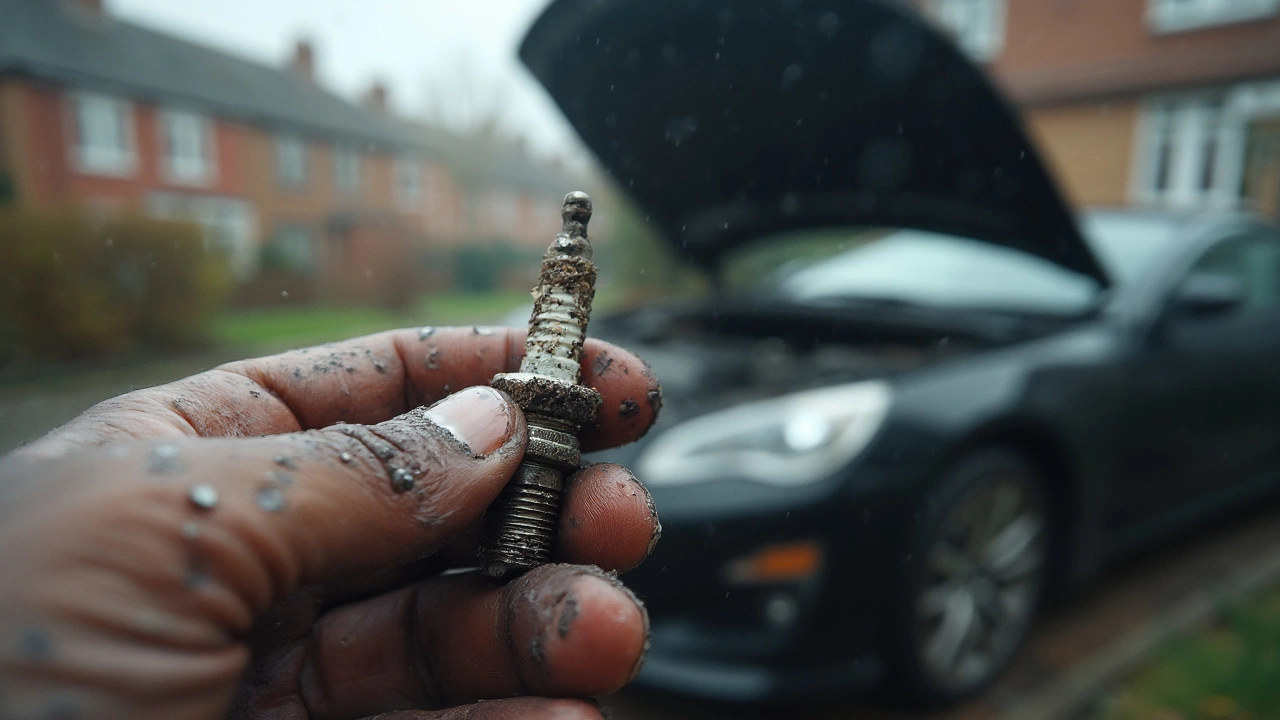Ever turned the key in your ignition and absolutely nothing happens? The dashboard lights flicker, the engine tries but it's only a weak cough, and you sit there mentally scolding your luck. Maybe you wonder if you're out of gas, if your battery died, or if your car's got something more expensive brewing. But here's the twist—often, it's something cheap and small: your spark plugs. It’s shocking that a tiny piece, just a few inches long and shaped like a stubby pencil, can single-handedly decide whether you get to work on time or end up waiting for a tow truck. Honestly, I never believed it until I watched Asher frantically popping our car’s hood on a rainy Wednesday morning, only to discover the spark plugs were shot. Let’s get into why these little troublemakers can bring your day, and your engine, to a sudden halt.
Why Spark Plugs Matter for Starting Your Car
Spark plugs seem humble, but they literally kick off the show when you turn the key. Their job? Ignite the air-fuel mixture inside your engine’s cylinders. When you crank the engine, an electric charge jumps the gap at the spark plug’s tip, sparking off a small explosion. That’s the ‘boom’ pushing pistons, turning the engine, and getting you on the road. If the plugs don’t spark, the whole chain reaction fizzles. No spark means no combustion, no combustion means your engine sits there stubborn as a cat refusing to leave a sunny window. Old, dirty, or damaged spark plugs simply can’t make a hot, strong spark. The latest research from the University of Michigan’s automotive engineering department found worn spark plugs could reduce ignition efficiency by up to 40%, which is enough to leave an engine stone-cold silent, especially in cold weather or if your battery’s not top-notch.
Now, how do plugs get so bad they sabotage your commute? There are plenty of enemies: ordinary wear, carbon buildup, oil leaks, or just plain age. Most spark plugs last 20,000–100,000 miles, but things like cheap fuel, leaky valve seals, or ignoring your maintenance schedule can cut that lifespan short. Ever seen plugs that look burned, oily, or crusted over? That’s often the first sign your engine isn’t firing on all cylinders—literally. I’ve known drivers who discovered spark plugs so eroded the metal electrode vanished. Without a healthy spark plug, your car may crank endlessly, sometimes fire up only to immediately stall, or worse, give you radio silence.
Think about how often spark plug trouble is mistaken for a dead battery, bad starter, or flooded engine. I’ve personally spent way too much money swapping a battery when my plugs were the true villains. Turns out, spark plugs are a common culprit for hard starts, especially if your car’s running rich or you’re a short-trip driver who never lets the engine fully warm. Even brand-new cars can get faulty plugs—sometimes from the factory. So if your engine’s slow to start or you hear it misfiring, the bad spark plugs might be dragging their feet and dragging you down with them.
How to Spot Bad Spark Plugs Before They Leave You Stuck
There’s something satisfying about catching a problem before it turns into a wallet-sucking crisis. Detecting bad spark plugs early is possible—if you know what to listen for and look at. First up, listen to your engine. Does it sound rough, uneven, or even like it’s about to stall at a stoplight? That rough idle might mean at least one spark plug isn’t firing right. When accelerating, you should feel smooth, steady power. If the car jerks, sputters, or seems to “lag,” a failing plug could be the hold-up. Cranking the engine and hearing ‘click-click-click’ with no start-up is a dead giveaway, too, especially if your headlights are strong (eliminating the battery as the cause).
If you’re the hands-on type, popping out a plug or two isn’t rocket science. Just be sure your engine is cool, and keep track of which wire goes where. Healthy spark plugs look gray-tan with no heavy deposits. Close inspection can tell you a lot:
- Black, sooty tips = running rich (too much fuel)
- Oily, wet plugs = oil entering cylinders (could point to bigger issues)
- White, blistered insulators = engine running too hot
- Cracked insulators or worn electrodes = plug is toast
Think of spark plugs as the doctors of engine health—when they “look sick,” your car feels sick. Your check engine light can also rat out bad plugs. Modern cars use sensors to monitor engine misfires, and a failing plug will trigger codes like P0300 (random misfire) or P0301–P0304 (misfires in specific cylinders). Plug an OBD2 scanner into your dashboard port, and that trouble code tells you whether to dig into spark plugs (rather than blaming your battery or alternator). I once caught a failing plug thanks to a check engine light before a summer road trip—dodged a big headache there.
Some quick signs you might notice if plugs are going bad:
- Poor fuel economy: The plug isn’t burning fuel efficiently.
- Hard starts, especially after the car sits overnight.
- Stalling immediately after startup.
- Noticeable drop in power, especially when merging onto the highway.
- Tougher emissions test—they can cause your car to fail if not firing correctly.
If any of these sound familiar, don’t shrug it off. Spark plugs are a quick, affordable fix compared to most car repairs. A 2024 AAA survey found the average cost for professional spark plug replacement is under $150 for most vehicles, compared to $400+ for a misdiagnosed battery or starter swap.

Other Car Problems That Mimic Bad Spark Plugs
Wouldn’t it be great if every car that won’t start just needed new plugs? Reality isn’t always that merciful, though. Lots of car problems can look identical to bad spark plugs, so sometimes you’re chasing the wrong faults. The most obvious is the battery—a weak battery can’t provide enough juice to turn the starter or fire up the plugs. If your interior lights dim when you try to start, think battery first. Starters themselves can wear out, producing a click but no crank. Fuel issues are another faker: a clogged fuel filter, dead fuel pump, or empty tank keep the engine from firing, regardless of spark plug condition.
Ignition coils and wires, which deliver high voltage to the plugs, break down with age or moisture. A damaged coil won’t let the plug spark even if it’s brand new. Sometimes an electrical short or blown fuse blocks the current entirely. And on modern cars, a bad crankshaft or camshaft position sensor can throw the computer for a loop, leaving you with a silent or erratic starting experience. Even the engine control unit (ECU) can get confused—or fail entirely—though that’s much more rare.
I once thought I had a bad plug, only to find a gnawed-through spark plug wire—we live near a woodsy lot, and mice love chewing car wires! It’s always smart to double-check all obvious stuff: is there fuel in the tank, are the battery terminals tight, does the car “turn over” when you twist the key? A little careful diagnosis can save you buying parts you don’t need, so don’t be shy about using a cheap code reader or consulting a trusted mechanic if you’re stuck.
Here’s a quick table you can use to rule out the usual suspects before blaming spark plugs:
| Symptom | Possible Causes |
|---|---|
| Engine cranks, no start | Bad spark plugs, weak battery, faulty ignition coil, no fuel |
| Engine won’t crank at all | Dead battery, starter failure |
| Starts, then stalls | Bad spark plug, fuel delivery issue |
| Rough idle or misfire | Bad spark plugs, faulty wires/coils |
| Low power, poor mileage | Aging spark plugs, clogged air/fuel filters |
Take these as a starting point. Spark plugs are cheap, but there’s no harm in double-checking the basics before you make the swap.
How to Check and Replace Your Own Spark Plugs
You don’t need a fancy garage or a shelf full of tools to check or swap spark plugs. If you know how to change a lightbulb or use a socket wrench, you’ll do fine. Here’s how I handle my own car, and honestly, it’s kinda satisfying to win this battle with my own hands. First, make sure the engine’s cool—you don’t want to touch anything hot or get burned working near the exhaust. Locate your spark plugs (usually four or six, sometimes eight in big engines); they’re on top or sides of the engine, with thick wires or coil packs popping off the top.
- Remove the Ignition Wires/Coil: One at a time, so you don’t mix up the order. Gently twist and pull.
- Use a Spark Plug Socket: This special socket grabs the plug and won’t let it drop. Attach your ratchet and turn counterclockwise to loosen.
- Inspect Each Plug: Compare to a chart online. You want light tan, dry electrodes. Anything oily or blackened means trouble.
- Check the Gap: Most auto parts stores will do this for you, but you can use a cheap tool. Plug gaps wear wider as they age; the right size is stamped in your car’s manual.
- Install New Plugs: Tighten them just snug, but don’t crank down with superhero strength. Too tight and you can strip the threads.
- Reconnect the Wires or Coils: Reverse order, making sure each one ‘clicks’ firmly into place.
While you’re at it, snap a photo with your phone before you start—that way you remember what goes where! It usually takes me under 40 minutes to do all the plugs in our car. Regular replacement depends on your ride, but most cars need fresh plugs every 30,000–60,000 miles unless you bought fancy iridium or platinum plugs with longer life.
Not sure which plugs to buy? Your owner’s manual will have a part number. Don’t just grab whatever’s on sale—the wrong plug can run too hot or cold. Some cars need specific heat ranges, thread lengths, or even special anti-seize grease on the threads. If you’re nervous, ask the parts counter clerk. Swapping plugs is one of those rare car projects where you can save big on labor—my friend Myra did hers on a Saturday and saved $100 versus a shop.

Expert Tips, Trivia, and Busting Myths About Spark Plugs
Spark plugs seem simple, but there’s loads of trivia hiding under the hood. Did you know that the world record for longest-lasting spark plug belongs to the original plugs in a ’65 Volvo P1800, which ran more than 900,000 miles? Or that Formula 1 cars sometimes go through a plug every race, since they run at insane temperatures? Even NASA spacecraft have used spark plug-like devices to ignite tiny engines in space.
People think modern spark plugs never need changing—wrong. Even platinum or iridium plugs get hammered by heat, oil, and gas. If your car runs on LPG or ethanol blends, plugs can wear even faster. And while it’s tempting to clean and reuse plugs, most pros advise against it—wire brushing or sandblasting can damage the insulator and shorten life.
One big myth: fancy, “high-performance” plugs make your sedan faster. They might last longer or resist fouling, but a regular daily-driver won’t see a dramatic power boost. Asher (my husband) once splurged on pricey triple-electrode plugs and honestly, our gas mileage didn’t budge. Always pick the spec-rated plug for your engine; more isn’t always better in car parts.
Here are a few quick facts:
- The average spark plug fires 1,500 times per minute at highway speeds.
- Each plug survives temperatures over 800°F (427°C) while resisting corrosive gases!
- Changing plugs on a regular cycle can improve fuel economy by up to 4%, according to the EPA.
- Bad plugs can overload your ignition coil, leading to much costlier repairs.
If you drive short distances—think school runs or grocery trips—your plugs may wear out faster than highway cruisers, thanks to condensation and carbon buildup. And don’t forget: a tune-up with fresh sparks is way cheaper than new ignition modules or catalytic converters fried by unburned fuel.
Bottom line? Never underestimate that little spark plug. It may be small, but you’ll definitely notice when it fails—usually at the worst time. A little awareness now could save you a lot of hassle the next time your engine decides to play dead.




